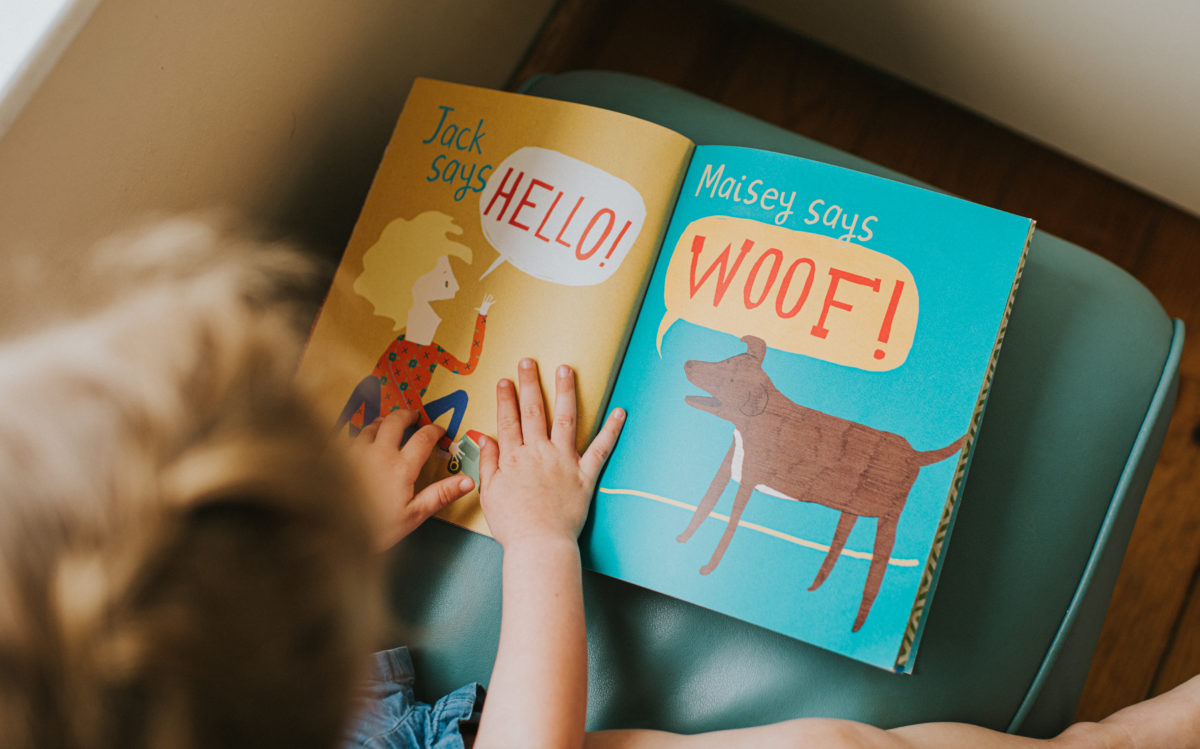Developing Children's Books: A Comprehensive Overview

A children’s book is a literary work specifically written and designed for children, typically ranging from infancy to early adolescence. These books can cover a wide range of genres, including fiction, non-fiction, poetry, and picture books. They are crafted with language, themes, and illustrations tailored to engage and educate children, fostering their imagination, literacy skills, and emotional development. Children’s books often feature vibrant illustrations or colorful imagery to capture the attention and imagination of young readers. They can address various topics, including friendship, family, adventure, problem-solving, and moral lessons, all presented in a way that is accessible and entertaining for children.
Anyone with a passion for storytelling, creativity, and an understanding of children’s interests and developmental needs can write children’s books. Authors of children’s books come from diverse backgrounds and experiences. Some may be professional writers specializing in children’s literature, while others might be educators, parents, artists, or individuals with a unique perspective to share.
Authors of children’s books typically possess the following qualities:
Imagination and creativity. The ability to craft engaging stories, characters, and settings that captivate young readers.
Understanding of child development. Knowledge of the cognitive, emotional, and social development stages of children helps in tailoring content appropriately for different age groups.
Empathy and sensitivity. Awareness of children’s feelings, fears, and interests enables authors to address themes and topics in a way that resonates with young readers.
Clarity and simplicity. Children’s books often use straightforward language and clear storytelling to ensure comprehension by young audiences.
Playfulness and humor. Incorporating elements of humor and playfulness can enhance children’s enjoyment of the story and encourage repeat reading.
Respect for diversity. Embracing diversity in characters, cultures, and experiences reflects the richness of the world and promotes inclusivity.
Collaboration skills. Working closely with illustrators, editors, and publishers to bring the story to life through words and visuals.
Overall, writing children’s books requires a genuine love for storytelling and a deep appreciation for the importance of literature in a child’s life.
***
When Educators Write Children’s Books
Educators play a vital role in creating children’s books because they have a deep understanding of children’s cognitive development, emotional needs, and educational goals. Here’s how educators contribute to the creation of children’s books:
Insight into learning objectives. Educators often have specific learning objectives in mind when creating children’s books. They can design stories that align with educational standards, teaching concepts such as literacy, numeracy, science, or social-emotional learning.
Understanding of child development. Educators are well-versed in the cognitive, emotional, and social development of children. They can create age-appropriate content that supports children’s developmental milestones and addresses their interests and concerns.
Incorporating teaching strategies. Educators can integrate effective teaching strategies into children’s books, such as repetition, rhyming, interactive elements, and multisensory experiences. These strategies enhance engagement and facilitate learning.
Addressing diverse needs. Educators are attuned to the diverse needs of children, including those with different learning styles, abilities, languages, and cultural backgrounds. They can create inclusive content that celebrates diversity and promotes empathy and understanding.
Feedback from classroom experience. Educators often test children’s books in their classrooms to gather feedback from young readers. This firsthand experience allows them to refine and improve their stories based on children’s reactions and comprehension.
Collaboration with illustrators. Educators may collaborate with illustrators to bring their stories to life visually. They can provide guidance on the illustrations to ensure they complement the text and enhance the overall storytelling experience.
Integration of real-life experiences. Educators can draw inspiration from real-life experiences in the classroom or community to create authentic and relatable stories for children. These stories can address everyday challenges, celebrate achievements, and foster a sense of belonging.
Promotion of literacy and love for reading. Educators understand the importance of promoting literacy and a love for reading from an early age. They can create engaging and enjoyable stories that instill a passion for books and inspire a lifelong love of learning.
Overall, educators bring a wealth of knowledge, experience, and creativity to the creation of children’s books, contributing to the enrichment of children’s literary experiences and educational journeys.
When Parents Write Children’s Books
Parents are uniquely positioned to create children’s books because they have an intimate understanding of their own children’s interests, preferences, and developmental stages. Here’s how parents contribute to the creation of children’s books:
Personal connection. Parents can draw inspiration from their own experiences, family stories, and everyday interactions with their children to create meaningful and relatable stories. These personal connections add authenticity and emotional depth to the narrative.
Understanding of child development. Parents have firsthand knowledge of their children’s cognitive, emotional, and social development. They can tailor the content and themes of their books to match their children’s developmental needs and interests.
Incorporating values and lessons: Parents can use children’s books as a tool to impart important values, lessons, and morals to their children. Through storytelling, parents can address topics such as kindness, empathy, resilience, and diversity in a way that resonates with their children.
Bonding and communication: Creating children’s books together can be a bonding activity for parents and children. It provides opportunities for meaningful conversations, creative expression, and shared experiences, strengthening the parent-child relationship.
Customization for individual children. Parents can tailor their books to suit the unique interests, personalities, and needs of their own children. This customization ensures that the stories are engaging and relevant to the specific child’s preferences and developmental stage.
Promotion of literacy. Parents play a crucial role in fostering a love for reading and literacy in their children. By creating and sharing children’s books, parents instill a passion for books from an early age and encourage their children to become lifelong readers.
Encouraging creativity. Through the process of creating children’s books, parents encourage their children to unleash their creativity, imagination, and storytelling skills. Children can contribute ideas, illustrations, and even co-author the stories, empowering them to express themselves creatively.
Legacy and family tradition. Creating children’s books can become a cherished family tradition, passed down through generations as a legacy of storytelling and creativity. These books can hold sentimental value and serve as treasured keepsakes for years to come.
Overall, parents bring a wealth of love, care, and personal insight to the creation of children’s books, enriching their children’s literary experiences and strengthening the family bond through storytelling.
When Children Write Children’s Books
Children creating children’s books is a wonderful way to foster creativity, imagination, and literacy skills while empowering young individuals to express themselves through storytelling. Here’s how children contribute to the creation of children’s books:
Imagination and creativity. Children have boundless imaginations, and creating children’s books allows them to unleash their creativity. They can invent fantastical characters, dream up exciting adventures, and explore imaginative worlds through their storytelling.
Personal expression. Children’s books created by children reflect their unique perspectives, experiences, and interests. Through storytelling, children can express their thoughts, emotions, and ideas in a way that is meaningful and authentic to them.
Empowerment and confidence. Creating children’s books empowers children to become authors and illustrators of their own stories. This process boosts their confidence, self-esteem, and sense of agency as they see their ideas come to life in a tangible form.
Language and literacy development. Writing and illustrating children’s books provide valuable opportunities for children to practice language skills, expand their vocabulary, and improve their literacy abilities. They learn about storytelling elements such as plot, character development, and narrative structure while engaging in a meaningful and enjoyable activity.
Critical thinking and problem-solving. Developing children’s books involves critical thinking and problem-solving skills as children make decisions about plot development, character design, and illustration techniques. They learn to think creatively and strategically to overcome challenges and bring their stories to fruition.
Collaboration and communication. Children may collaborate with peers, siblings, or adults to create children’s books, fostering teamwork, communication, and social skills. Collaborative projects provide opportunities for children to share ideas, negotiate differences, and work together towards a common goal.
Appreciation for literature. Engaging in the process of creating children’s books can deepen children’s appreciation for literature and storytelling. As they develop their own stories, children gain a greater understanding of the elements that make a good book and develop a lifelong love for reading.
Celebration of diversity. Children’s books created by children often reflect their diverse perspectives, backgrounds, and cultures. These stories celebrate diversity, promote inclusivity, and foster empathy and understanding among young readers.
Overall, children creating children’s books is a valuable and enriching experience that nurtures creativity, literacy skills, and self-expression while fostering a love for storytelling and literature from a young age.
When Illustrator Create Children’s Book
Illustrators play a crucial role in the creation of children’s books, as their vibrant and imaginative artwork brings stories to life and captivates young readers. Here’s how illustrators contribute to the process:
Visual storytelling. Illustrators use their artistic skills to visually convey the narrative of the story. Through carefully crafted illustrations, they enhance the text, deepen the emotional impact, and engage readers in the storytelling process.
Character design. Illustrators create memorable characters that resonate with children. They develop distinct personalities, expressions, and gestures that help readers connect with the characters on an emotional level.
Setting the scene. Illustrators establish the setting and atmosphere of the story through detailed backgrounds, landscapes, and environments. Their illustrations transport readers to fantastical worlds, historical settings, or familiar places, enriching the reading experience.
Visual pacing. Illustrators play with pacing and layout to control the flow of the story and create visual interest. They use techniques such as page composition, paneling, and pacing to guide readers through the narrative and maintain engagement.
Color and composition. Illustrators use color palettes, textures, and composition to evoke mood and enhance the storytelling. They employ color symbolism and visual motifs to convey themes and emotions, creating a rich visual experience for readers.
Age appropriateness. Illustrators tailor their artwork to suit the target age group of the children’s book. They consider factors such as artistic style, complexity of illustrations, and visual literacy to ensure that the artwork is accessible and engaging for young readers.
Collaboration with authors. Illustrators collaborate closely with authors to bring their vision to life. They interpret the author’s words and ideas, offering creative insights and suggestions to complement the text with visual storytelling elements.
Incorporating diversity. Illustrators play a key role in promoting diversity and representation in children’s books. They create inclusive artwork that reflects diverse cultures, backgrounds, and identities, helping children see themselves reflected in the stories they read.
Attention to detail. Illustrators pay meticulous attention to detail, ensuring that every element of the artwork contributes to the narrative and enhances the reader’s experience. From facial expressions to background details, every aspect of the illustration is thoughtfully crafted.
Spark imagination. Illustrators ignite children’s imaginations with their whimsical, playful, and imaginative artwork. Their illustrations inspire curiosity, creativity, and wonder, encouraging children to explore the world of the story and embark on their own imaginative journeys.
Overall, illustrators bring creativity, imagination, and visual storytelling skills to the creation of children’s books, enriching the reading experience and fostering a lifelong love for art and literature in young readers.
Process Involved in Creating a Children’s Book
Creating a children’s book involves several key steps, from conceptualization to publication. Here’s an overview of the typical process involved:
Idea generation. Idea generation in creating a children’s book refers to the process of brainstorming, conceptualizing, and developing the storyline, characters, and themes that will form the foundation of the book. This could be sparked by personal experiences, observations, interests, or themes the author wants to explore.
Writing the manuscript. Once the idea is formed, the author writes the manuscript. Writing the manuscript for a children’s book involves crafting the storyline, characters, and dialogue that will engage young readers, conveying themes and messages in a clear, engaging, and age-appropriate manner. Depending on the type of children’s book (e.g., picture book, chapter book), the length and complexity of the manuscript may vary.
Storyboarding or sketching. For picture books, illustrators often create rough sketches or storyboards to visualize the text and plan the layout of the illustrations. This helps in pacing the story and ensuring that text and illustrations complement each other effectively.
Illustration creation. Illustrators begin creating the artwork based on the manuscript or storyboard. They develop character designs, create backgrounds, and finalize the visual elements that will accompany the text. This process may involve multiple drafts and revisions to achieve the desired look and feel.
Revision and editing: The manuscript undergoes revisions and editing to refine the storyline, improve clarity, and address any inconsistencies or issues. This stage may involve feedback from editors, beta readers, or critique groups to ensure the text is polished and ready for publication.
Design and layout. Once the manuscript and illustrations are finalized, the book’s design and layout are determined. This includes selecting fonts, arranging text and images on the pages, and considering factors such as page breaks and pagination.
Proofreading. The final manuscript and artwork are thoroughly proofread to catch any spelling, grammar, or formatting errors. This step ensures that the book is free from mistakes before moving forward with printing.
Printing and production. Once the design and content are approved, the book is sent to a printing company for production. The printing process may involve choosing paper quality, binding options, and printing techniques to achieve the desired aesthetic and durability.
Distribution and marketing:. After printing, the book is distributed to retailers, online platforms, or directly to consumers. Marketing efforts, such as book launches, author events, social media promotion, and book reviews, help raise awareness and generate sales.
Launch and promotion. The book is officially launched to the public, accompanied by promotional activities to generate buzz and attract readers. This may include book signings, school visits, media interviews, and virtual events to engage with the target audience.
Feedback and iteration. Authors and illustrators gather feedback from readers, reviewers, and industry professionals to evaluate the book’s reception and identify areas for improvement. This feedback loop informs future projects and iterations of the book.
Throughout the process, collaboration between authors, illustrators, editors, designers, and publishers is essential to ensure a cohesive and successful children’s book that resonates with its intended audience.
****
In conclusion, a children’s book is more than just a story on paper; it’s a gateway to imagination, discovery, and learning. Through vibrant illustrations, captivating narratives, and timeless themes, children’s books inspire young minds, ignite curiosity, and foster a lifelong love for reading. Whether it’s a whimsical tale of adventure, a heartwarming story of friendship, or an educational journey through the wonders of the world, children’s books hold the power to shape, uplift, and enrich the lives of generations to come. So, the next time you open the pages of a children’s book, remember that you’re not just entering a story — you’re embarking on an unforgettable adventure that will stay with you long after the final page is turned.




